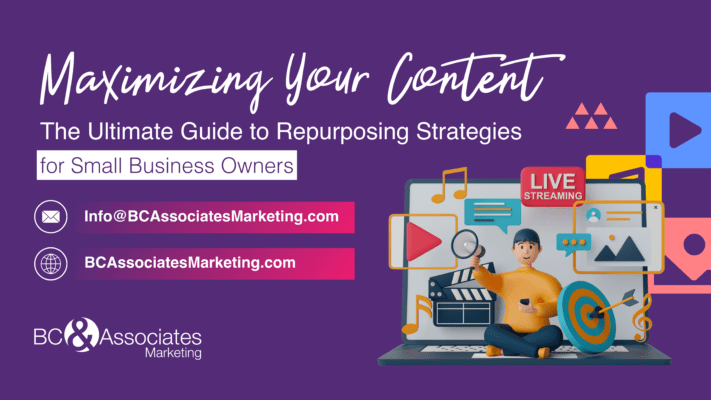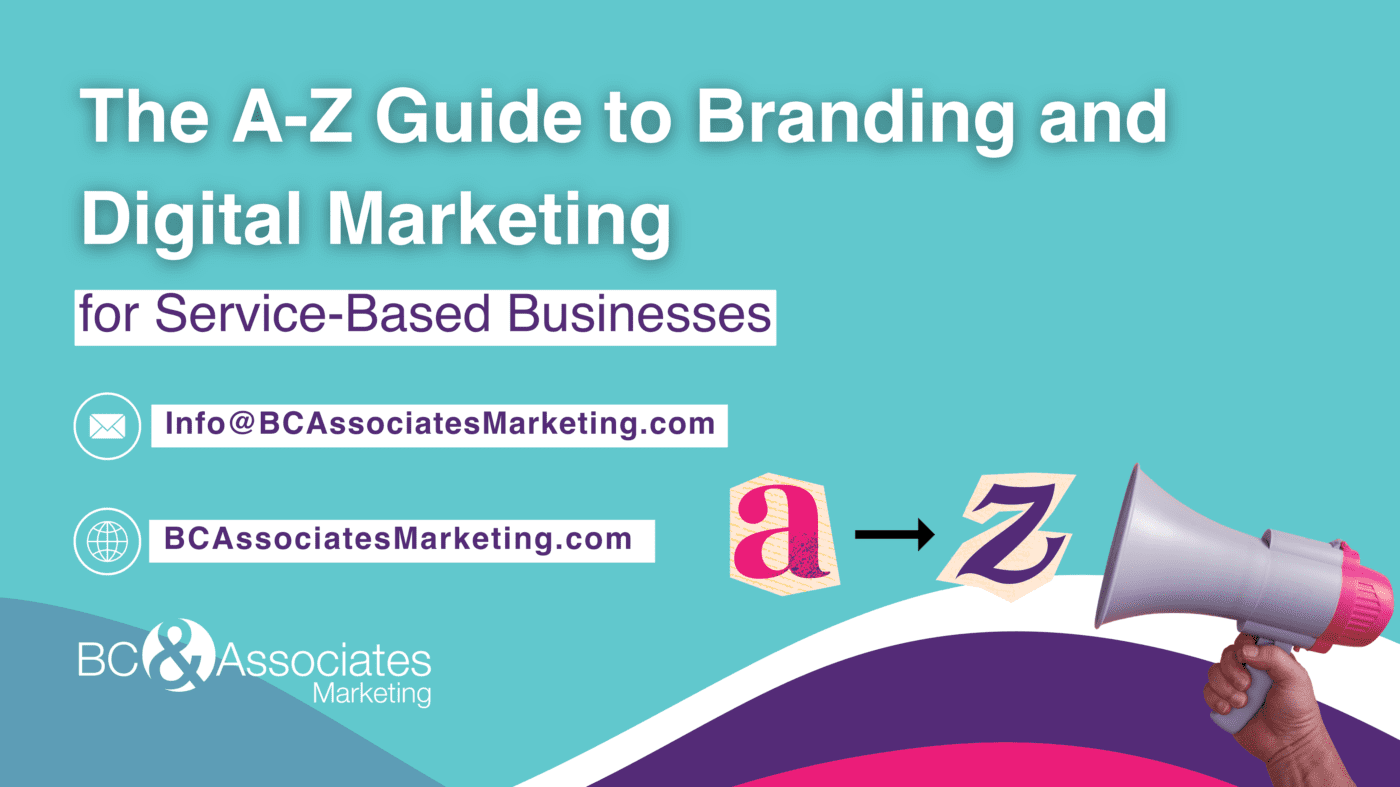Are you a service-based business owner feeling overwhelmed by the myriad of branding and digital marketing terms? You’re not alone. Understanding these terms can significantly enhance your ability to strategize, execute, and measure your marketing efforts. This comprehensive alphabetical guide is designed to demystify key concepts, empowering you to make informed decisions and propel your business toward success.
Why Understanding These Terms Matters
Navigating the world of branding and digital marketing can be complex, but it’s essential for your business’s growth. Knowing these terms helps you:
- Communicate Effectively: Speak the same language as your marketing team and vendors.
- Make Informed Decisions: Allocate resources wisely and optimize your marketing strategies.
- Measure Success: Track and evaluate the performance of your campaigns accurately.
A Comprehensive Alphabetical List of Branding and Digital Marketing Terms
A
Analytics: The collection and analysis of data from your digital marketing efforts to measure performance, understand customer behavior, and make informed decisions. Tools like Google Analytics are commonly used.
B
Brand Equity: The value that your brand adds to your products or services based on customer perception. Strong brand equity leads to customer loyalty, higher sales, and the ability to charge premium prices.
Brand Identity: The collection of visual elements—like logos, colors, and typography—that represents your business. It’s how your customers perceive you and what sets you apart from competitors.
Brand Positioning: The process of positioning your brand in the market to establish a unique and valuable place in the minds of your target customers. It defines how you want your brand to be perceived relative to competitors.
Brand Story: The narrative that connects your brand with your customers on an emotional level, outlining your origins, mission, values, and vision. It’s your unique story that resonates and builds a loyal customer base.
Brand Voice: The consistent tone and style in which you communicate with your audience. Whether friendly, professional, or quirky, it helps shape your brand’s personality and connect with your customers.
C
Content Marketing: Creating and distributing valuable, relevant content to attract and engage your target audience. This can include blogs, videos, infographics, and social media posts.
Conversion Rate Optimization (CRO): The process of improving your website and marketing efforts to increase the percentage of visitors who take the desired action, such as making a purchase or filling out a form.
Customer Journey Mapping: A visual representation of the steps a customer goes through when interacting with your business. It helps identify touchpoints, pain points, and opportunities to enhance their experience.
Customer Persona: A detailed profile of your ideal customer, based on market research and real data about your existing customers. This helps tailor your marketing efforts to meet their specific needs and preferences.
E
Email Marketing: Sending targeted emails to your prospects and customers to nurture relationships, promote your services, and drive conversions. It’s a powerful tool for building loyalty and increasing repeat business.
I
Influencer Marketing: Partnering with influencers—individuals with a large and engaged following—to promote your services and expand your reach. It leverages their credibility and influence to build trust with potential customers.
L
Lead Generation: The strategies and tactics used to attract and convert strangers into potential customers who have expressed interest in your services. This often involves using landing pages, forms, and calls to action.
M
Marketing Funnel: The journey that a customer takes from awareness to purchase. It typically includes stages like awareness, interest, consideration, and decision, guiding your marketing strategies at each step.
P
Pay-Per-Click (PPC) Advertising: An online advertising model where you pay each time a user clicks on one of your ads. It’s a way to quickly drive traffic to your site and generate leads.
R
Remarketing/Retargeting: Advertising strategies that target users who have previously interacted with your website or ads, reminding them of your services and encouraging them to take action.
S
SEO (Search Engine Optimization): The practice of optimizing your website and content to rank higher in search engine results, increasing visibility, and driving organic traffic to your site.
Social Media Marketing: Using social media platforms to promote your business, engage with customers, and build your brand. It involves creating and sharing content, running ads, and interacting with your audience.
U
User Experience (UX): The overall experience a user has when interacting with your website or digital product. Good UX design ensures that it’s easy, intuitive, and enjoyable to use, leading to higher customer satisfaction.
V
Value Proposition: A clear statement that explains how your product or service solves customers’ problems, delivers specific benefits, and tells why customers should choose you over competitors.
W
Website Online Marketing: The comprehensive strategy of using your website to promote your services, engage visitors, and convert them into leads or customers. This includes elements like SEO, content marketing, CRO, and UX design, all aimed at maximizing your online presence and effectiveness.
Common Mistakes and Myths
- Mistake: Ignoring SEO because it seems too complex.
- Truth: SEO is essential for driving organic traffic and increasing visibility. Starting with basics like keyword research and on-page optimization can make a significant difference.
- Myth: Email marketing is outdated.
- Reality: Email marketing remains one of the most effective ways to nurture relationships and drive conversions. Personalized, targeted emails can significantly boost engagement and sales.
- Mistake: Overlooking the importance of a clear brand voice.
- Truth: A consistent brand voice helps build trust and recognition among your audience. It distinguishes your business and makes your communications more impactful.
Want to learn how you can turn myths into actionable truths? Watch our video Turning 10 Marketing Myths to Actionable Truths
Best Practices
- Leverage Analytics: Regularly review your analytics to understand what’s working and what’s not. Use these insights to refine your strategies and improve performance.
- Invest in Content Marketing: Create valuable content that addresses your audience’s pain points and interests. High-quality content not only engages but also establishes your authority in the industry.
- Optimize for Conversions: Continuously test and optimize your website elements to improve conversion rates. Small changes, like tweaking your CTA or improving page load times, can lead to significant results.
- Engage with Influencers: Identify and collaborate with influencers who align with your brand values and have a genuine connection with their audience. Their endorsement can enhance your credibility and reach.
Trends to Watch
- Personalization: Customers expect personalized experiences. Use data to tailor your marketing messages and offers to individual preferences and behaviors.
- Video Content: Video continues to dominate. Incorporate video into your content marketing strategy to capture attention and convey information more effectively.
- Voice Search Optimization: With the rise of smart speakers, optimizing for voice search is becoming increasingly important. Focus on natural language and long-tail keywords.
Bonus: Innovative Ideas
- Bundle Services with Content Offers: Create packages that include valuable content like e-books or webinars to add value and attract customers.
- Interactive Content: Use quizzes, polls, and interactive infographics to engage your audience and gather insights.
- Referral Programs: Encourage your satisfied customers to refer others by offering incentives. Word-of-mouth remains a powerful marketing tool.
Conclusion
Mastering the language of branding and digital marketing is a powerful step toward driving growth for your service-based business. By understanding and leveraging these terms, you can enhance your marketing strategies, build a strong brand, and connect more effectively with your audience. Don’t wait—start implementing these insights today and watch your business thrive.
For more in-depth strategies, check out our blog on Maximizing Your Content Marketing Efforts.

P.S. Ready to spark your unique opportunities and ignite your marketing? Here are three ways to work with us.
1. 📞 Schedule a Complimentary 15-minute Call and let’s delve into your goals and answer any questions you may have.
2. 📘 Read Beverly’s book Marketing for Entrepreneurs a quick guide filled with actionable steps to help make your brand and business shine even brighter. 🎙️ Listen to Beverly’s Marketing Podcast where she interviews entrepreneurs to get inspired and gain new business and marketing insights.
3. 🎓 Learn more about marketing and Enroll in Our Marketing Courses designed to bring clarity to your business efforts. They’re easy-to-understand and self-paced, perfect for busy entrepreneurs like you.
Additional Resources to Aid Your Marketing Journey
- Email Marketing Tactics for Service-Based Businesses That Actually Work
- Content Marketing Strategies for Service-Based Businesses: Creating Valuable and Engaging Content
- The Ultimate Guide to Building a Strong Service-Based Brand
- The Power of Storytelling in Marketing Your Service-Based Business
- How to Use Social Media to Grow Your Service-Based Business


